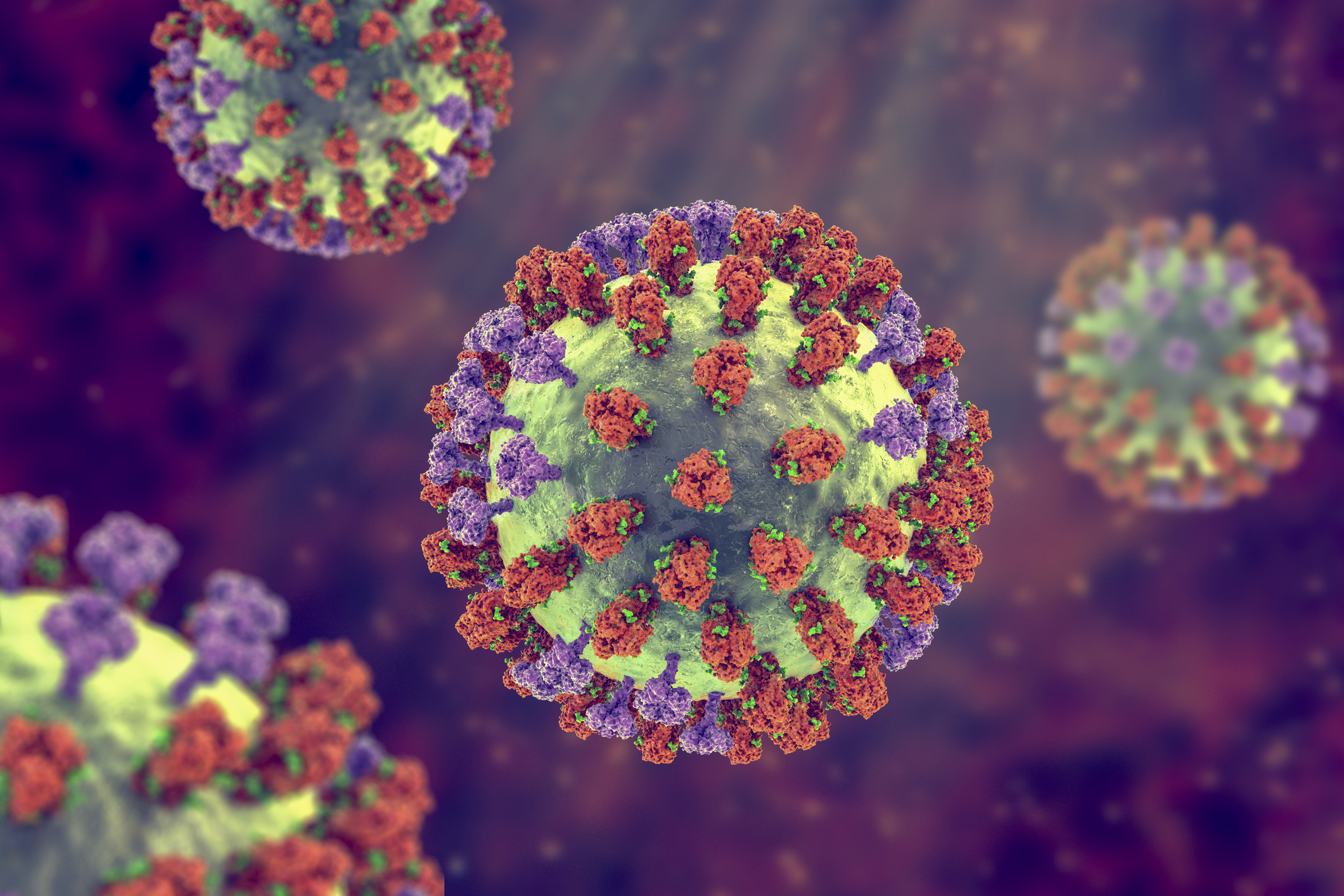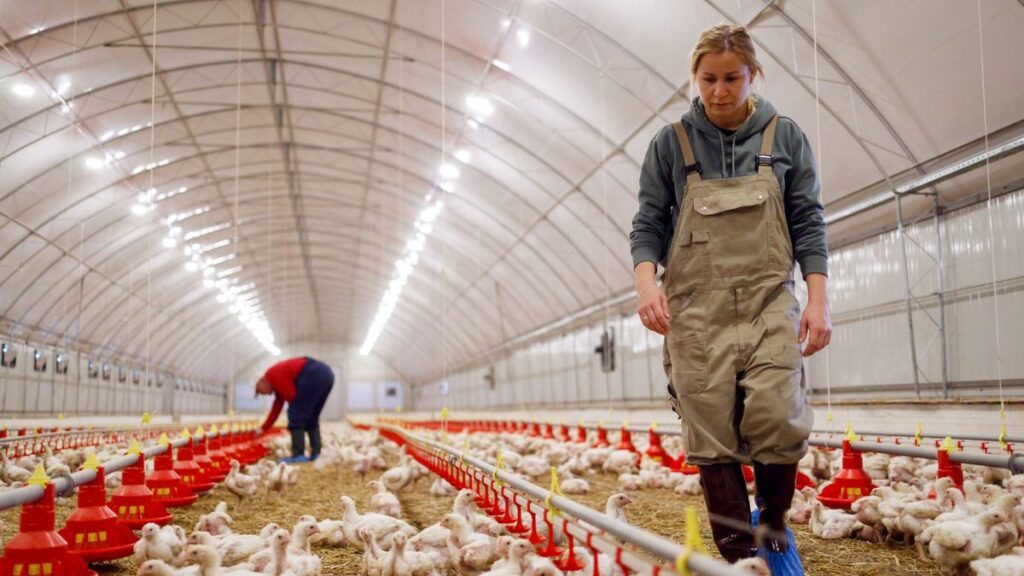H5N1 bird flu is spreading through poultry and cattle in the United States, and some cases have been reported in people.
No human-to-human spread of the virus has been documented, and the vast majority of infections stem from contact with farm animals. Because of this, the Centers for Disease Control and Prevention (CDC) considers the risk to the general public very low. However, a recent CDC study found that the respiratory virus is evolving to better infect mammals.
The CDC and other health agencies are keeping an eye on the virus because, if it starts spreading between people, there is the potential for a human epidemic or pandemic.
Fortunately, there are steps people can take to minimize their risk of contracting H5N1. Here’s what public health agencies know about preventing bird flu infections.
Related: Bird flu could become deadlier if it mixes with seasonal flu viruses, experts warn
How do people catch H5N1?
People almost exclusively catch H5N1 through direct contact with sickened animals. The virus can travel in tiny particles, called aerosols, through the air, as well as through slightly larger “respiratory droplets” and possibly on bits of dust, according to the CDC. These particles are shed when animals breathe, excrete waste, or — for cows — during milking.
The viral particles can cause infection when they enter a person’s eyes, nose or mouth, either when the person breathes or touches their face after their hands have been contaminated.
There have been a handful of cases this year — two in the U.S. and one in Canada — in which someone has contracted H5N1 without known contact with livestock or wild birds. Public health officials aren’t sure how the virus was transmitted in these cases. Avian flu can also be transmitted through wild bird droppings, so it’s possible these individuals encountered the virus outdoors without actually getting close to a sickened animal.
Has H5N1 infected people before?
The H5N1 subtype of avian flu was first detected in wild waterfowl in southern China in 1996, and it caused scattered outbreaks among domestic poultry in the region in 1997, according to the CDC. Since then, there have been more than 900 sporadic human cases around the world. Half of the people infected died, raising fears about the seriousness of the disease.
In 2005, the disease spread to Africa, the Middle East and Europe, although it was still mostly affecting animals. In 2021, a new genetic subtype of the virus emerged and quickly spread to the Americas. There, it sparked deadly outbreaks among commercial poultry, and recently, it’s infected goats, dairy cows and the occasional person.
As of Nov. 26, there have been 55 confirmed cases of bird flu among people in the United States in 2024, according to the CDC. All but two of these cases are known to have involved direct contact with cattle or poultry. In California, the state with the most reported cases, 28 out of 29 infected people caught the flu by working with cattle.
The two remaining U.S. cases had no known animal source: one in a child in California and one in an adult in Missouri. A teenager in British Columbia also recently fell ill with no known animal contacts. In none of these cases has the disease spread to other people, according to the CDC. Officials suspect animals were also the source of these individuals’ infections, although they haven’t been able to pinpoint the exact route of exposure.

Who’s at risk of catching bird flu?
Farmworkers and other people whose work brings them in close contact with poultry and cattle face the highest risk of bird flu. A recent study found that the virus can remain infectious in raw milk and on milking equipment for more than an hour, meaning milk could be a source of exposure for dairy workers. Workers may also become ill while cleaning droppings from poultry pens.
There are concerns that raw milk consumption could raise the risk of transmission to people beyond the agricultural industry. Additionally, because wild animals can carry H5N1, there’s some risk of people becoming exposed through interactions with infected animals or via exposure to their feces, respiratory fluids or contaminated fur.
How can you avoid catching bird flu?
The CDC has issued guidance for the use of personal protective equipment (PPE) for farmworkers. This PPE includes respirators, a type of face mask, to prevent people from breathing in the virus and safety goggles to keep the virus out of their eyes.
Members of the general public can protect themselves by avoiding close contact with sickly or dead animals, according to the CDC. Unusual or suspicious cases of animal death can be reported to the local health department or state wildlife agency.
There have been no known cases of transmission of avian flu from the commercial food supply in the U.S., but raw poultry products have previously caused infections in southeast Asia, the CDC says. As a general food safety measure, the CDC recommends cooking poultry and eggs to an internal temperature of 165 degrees Fahrenheit (73.9 degrees Celsius). Ground beef should be cooked to 160 F (71.1 C) and whole cuts of beef should reach 145 degrees F (62.8 C).
Raw milk and products made from raw milk, such as yogurt, should be avoided, the CDC cautions. Raw milk not only poses potential risks due to avian flu but also carries known risks of other contamination, such as Listeria bacteria.
Is there a vaccine for bird flu?
There is no vaccine against H5N1 avian flu currently available, given that the disease still does not easily spread between people.
However, given the possibility that the virus could one day evolve to enable human-to-human transmission, the U.S. government has developed five candidate virus proteins as the basis for future vaccines. Federal health officials have also ordered the production of 4.8 million doses of an experimental bird flu vaccine to have on hand in case of human-to-human transmission or any other concerning change in how the virus operates.
Recent research also suggests that vaccines based on earlier genetic subtypes of H5N1 can still protect against the most recently emerged version of the virus.
In addition, earlier this year, the Argentinian vaccine manufacturer Sinergium Biotech launched a project with World Health Organization support to use mRNA — the genetic molecule used in some COVID-19 vaccines — to develop vaccines against H5N1. The goal is to ensure that low- and middle-income countries will be prepared for potential pandemics, despite lacking resources for vaccine programs of their own.
This article is for informational purposes only and is not meant to offer medical advice.
Ever wonder why some people build muscle more easily than others or why freckles come out in the sun? Send us your questions about how the human body works to community@livescience.com with the subject line “Health Desk Q,” and you may see your question answered on the website!
